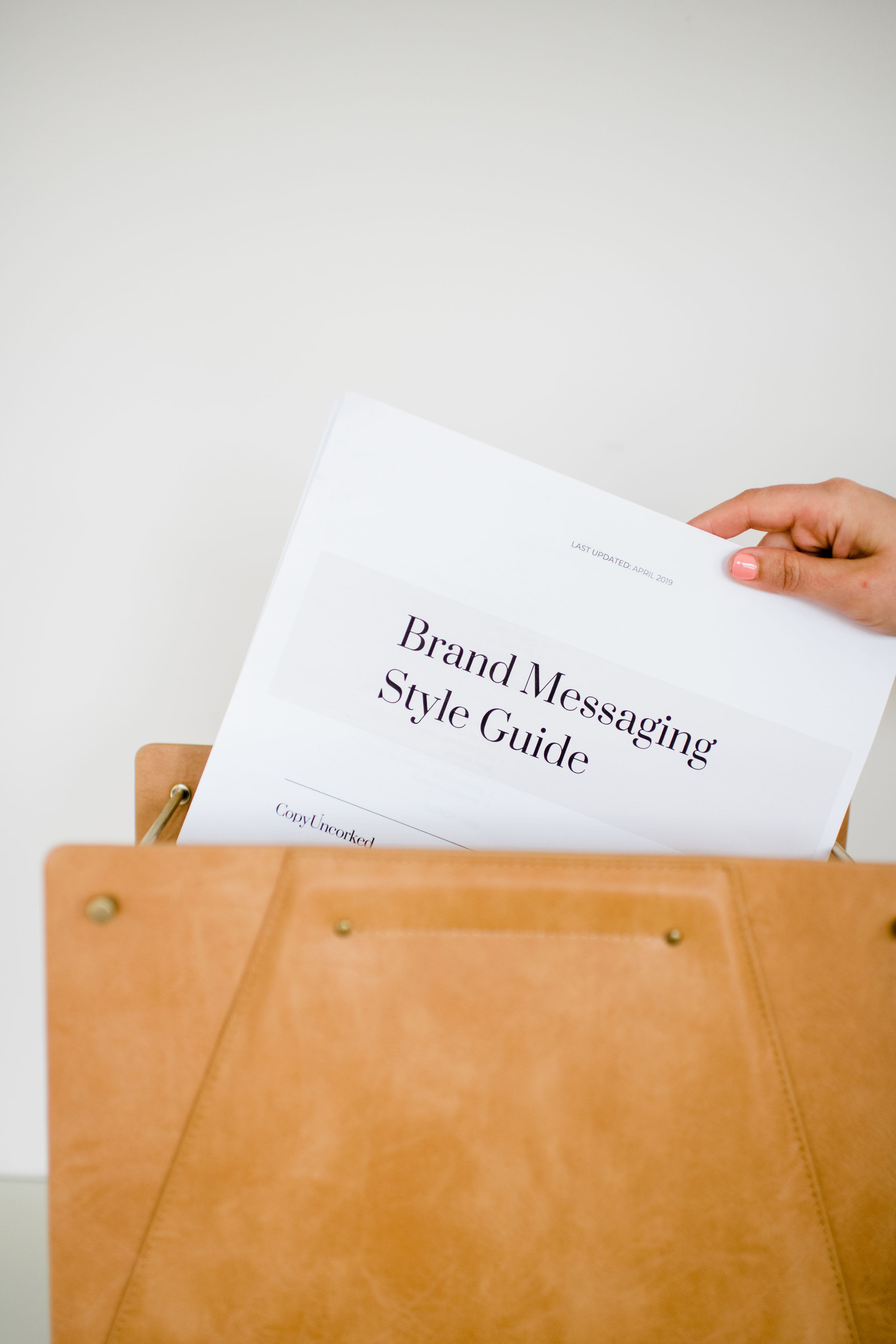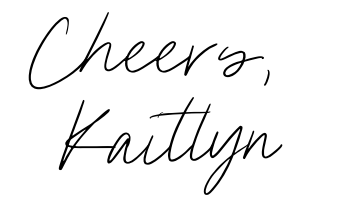A brand message is a compilation of strengths, differentiators, your value proposition, tagline, elevator pitch, a detailed understanding of your audience, storylines that resonate with your target audience, and more.
Although that sound like a lot, the best messages are clear, consistent, relatable, inspiring, and compelling.
They make it a no-brainer to get involved with what you have to offer, provide contrast against the competition, and serve a particular niche.
A great brand message frames the conversation and can even shift perspectives.
Take the brand Levi’s for example. They could be seen as a dated brand and wearing “mom jeans” could have a very different connotation than the surprisingly stylish one that it does.
That’s because Levi’s has worked hard to create a brand message that says “quality never goes out of style.”
They’ve leveraged the emotion of nostalgia and made it something new, lasting, and iconic all at the same time.

How This Affects Decision Making
We make decisions based on emotion, but justify them with logic. This is a psychological fact. If you’ve ever gone to buy a piece of luxury branded fashion or even a car, you can relate to this.
You know there are plenty of handbags out there that function the exact same as one that costs thousands of dollars, and may even be made of similar materials (leather, gold-plated hardware).
Yet, there’s something about the designer experience, the status having a designer handbag creates, and the fact that it’s easy to justify as something we’ve earned or deserve.
There are plenty of cars that will get you from point A to point B, but it’s the extra bells and whistles, the slick, sexy marketing, and how it all appeals to our emotions that get us wanting (and rationalizing) a $40K car instead of a $10K one.
We think, “But this car will make me look more professional. I’ll be able to take potential clients golfing and cement new business.”
It’s not entirely false, but it is interesting how that works, isn’t it?
Addressing (& Solving) for the Conflict
Now, before you start to feel like all of messaging and marketing is some sleazy sales tactic, let’s back up…
Good brand messaging isn’t sleazy, because it delivers real value and results – and it’s not afraid to promise that up front. That takes guts and a real belief in your product / service!
What sells is conflict – a problem, a pain point, a fight (so to speak). It’s in the tension that you have the opportunity to help your audience overcome their struggle with your offering.
Essentially, your job is to get in the battle with your prospect and help them overcome something that you’ve positioned as an injustice.
That sounds really intense, but take a simple line from my friends at Tonic Site Shop who create customizable website designs for the modern, stylish creative.
They say: “No code. No tears. No limits.”
The conflict, or injustice, they’re overcoming is late nights spent fiddling with your website, being completely overwhelmed with customizations that require coding knowledge, and limitations that prevent you from obtaining the end result you desire. (A stunning website that books clients and causes the compliments to roll in.)
See? Why would you go through that pain when you could just buy a website template?
Or take our copywriting services for example.
We provide a 3-step process that delivers targeted, high-converting copywriting so you can capture (and keep) the attention of your prospects and generate more revenue.
The alternative to that?
Spending hours clicking away on your keyboard, ready to pull your hair out and polish off the bottle of wine, only to feel like you still end with something only your mom would want to read.
Who wants to endure that?
If there isn’t some form of pain, problem, or desire, there’s no message, and there’s no sale.
The 3 Components of Your Prospects “Problem”
Let’s break this down even further.
Storybrand encourages marketers to take their messages a step further and really breakdown these 3 components:
- The external problem, or the immediate need.
- The internal problem your prospect is experiencing in relation to this need.
- The philosophical problem that speaks to the bigger picture and stirs up a more compelling desire.
As Donald Miller says, “The philosophical problem in a story is about something even larger than the story itself. It asks, “Why does this story matter in the overall epic of humanity?”
By going as far as identifying the philosophical problem, you begin to have a stake in a larger conversation, that causes people to start listening.
Here’s how multi-level marketing company, Arbonne International, achieves this on its homepage.

External problem: I need skincare.
Internal problem: I fear aging and what using harmful products will do to my skin.
Philosophical problem: The beauty industry is riddled with chemicals, dyes, and synthetic materials and I want to be a part of changing that.
Below their initial value proposition – or brand statement – they provide an invitation that goes far beyond just a need for skincare: the ability to create the life you’ve imagined through pure, safe, and beneficial products.
Do you see how this type of messaging connects with our emotional, rational, external, internal and philosophical concerns?
It’s this sense of meaning and purpose that keeps your clients / customers loyal to your brand and coming back for more.
I’m a big fan of the TV show Suits and it’s taught me to remember that people in a legal battle have very distinct motives. They’re constantly wondering, “What’s in it for me and how can I come out on top?”
Let’s face it, our purchasing decisions are also fueled by emotional motives and our clients / customers are asking the same question.
Our Brand Messaging Process
Listening is more important than talking when it comes to brand messaging.
Go ahead, read that one again.
If your brand’s positioning is us-centric and not audience-centric, no one will listen.
That’s why we even start our Brand Messaging process by interviewing you (our client). We ask a number of seemingly simple questions that provide deep insight into your target audience and how you close the gap for them.
We dig deep to discover your brand’s origin, purpose, and the end result (or transformation) you offer.
Then we step into further research, extracting the words, phrases, and concerns from the mouths of your customers themselves.
Here are some things we include in our client’s Brand Messaging documents:
- Target Audience Overview
- Elevator Pitch, Brand Bio, Mission Statement
- Words & Phrases Bank
- A swipe file of language in your brand voice
- Brand Story Lines
- Core Values
- What shapes your thoughts & actions (and how that aligns with your audience’s desires)
…and legitimately so much more.

How Brand Messaging Sets You Up for Copywriting Success
A brand messaging overview is essentially the blueprint for writing the copy for your website, blogs, social media captions, sales pages, email sequences – anywhere you’re writing with an intent to have your audience (1) engage and (2) take some form of an action.
Once your have a Brand Messaging Style Guide, like the one we provide our clients with, you can use it to craft anything and everything you need to write for your brand.
Your copy with start to have a “golden thread” of intentional brand messages woven throughout that attract your prospects and give them the feeling that you’re the right company for their needs.
Case in point: You are probably well aware of Jenna Kutcher’s $300 Craigslist camera, body positivity, and support of women entrepreneurs. These are storylines that have turned her into a 7-figure brand.
She repeats these constantly because guess what? You know them by heart!
What did you do in school when you wanted to memorize something? You used the study tactic of repetition!
It’s very similar in marketing. You want to get to the point where your audience can tell your stories for you. That’s what it means to be a brand.
That’s why when I say Nike, you say Just Do It.

Back to the Messaging Board
So if you feel like your copywriting isn’t working, go back to your messaging.
Are you consistently communicating a specific value?
Are you appealing to both the emotional and logical sides of the brain?
Are you presenting a different angle than the competition or status quo?
Are your storylines clear and woven throughout all of your touchpoints?
These are just many of the qualifying questions you can ask yourself. If you want more and think your ready to partner with us in compiling your brand messaging, check out our 1×1 Services or Brand Strategy Deep Dive.
Questions, comments or more to add? Pop them in the comments below!


Read the Comments +
-
[…] Brand Messaging 101 […]
-
[…] Okay, we’ll talk about this one a bit more below and you can also get more of the ‘101’ on brand messaging in this post. […]
-
Such an amazing read! Thanks so much for thoroughly explaining brand messaging for us.






[…] Brand Messaging 101 […]
[…] Okay, we’ll talk about this one a bit more below and you can also get more of the ‘101’ on brand messaging in this post. […]
Such an amazing read! Thanks so much for thoroughly explaining brand messaging for us.